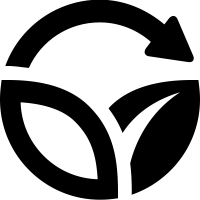Sustainability Concepts
A. DefinitionCleaner production (CP) is a preventative approach to managing the environmental impacts of business processes and products. CP uses changes in technology, processes, resouces or practices to reduce waste, environmental and health risks; minimise environmental damage; use energy and resources more efficiently; increase business profitability and competitiveness; and increase the efficiency of production processes. Cleaner production is applicable to all businesses, regardless of size or type.
B. Main Features
Cleaner production is an ongoing process that can be applied to production processes; products; or services; or it can be extend to cover the entire lifecycle of a product or service. Some cleaner production techniques include:
Cleaner production is related to other sustainability concepts such as eco-efficiency; environmental sound technologies; life cycle assessment; green procurement and zero emissions. For cleaner production to succeed, senior management support, staff awareness and participation, and staff input is required.
- Changes in technology.
- Changes in input materials.
- Changes in operating practices.
- Changes in product design.
- Changes in waste use.
- Changes in maintenance.
- Changes in packaging.
The impetus behind cleaner production includes the reduction of operation or pollution license fees; regulations; peer pressure; corporate image; corporate environmental plans or policies; cost savings; and product bans. Barriers to implementing a CP program include: lack of finances (perceived or real); low environmental awareness or concern of the organisation; lack of organisational support; lack of human resources; and limited access to appropriate technology.
The CP technique employed by organisations differs, however, the basic CP process is:
C. Case Studies and Examples
- Planning and organisation - organisation are made aware of the CP process, stakeholder input sort, CP team formed, environmental policy reviewed or written, and budgets and program created.
- Assessment - material inputs and outputs identified and assessed, current processes and costs assessed, environmental and health impacts reviewed, CP options identified.
- Feasibility analysis - each CP option is assessed for its environmental impact and its technological and economical viability, final CP option selected.
- Implementation - selected CP option is implemented and a monitoring and evaluation program established.
- Continuation - regular audits conducted and findings feed back into the decision making process, stakeholders informed of progress and gains.
D. Target Sectors / Stakeholders
- 1. Orange Juice
An orange juice manufacturer in Australia was drying its waste orange peels and selling them as stock feed. However, the drying process created 4 million tones of effluent a month, which was causing environmental problems. After assessing the problem, it was found that some of the effluent components, namely citrus oil and sugar, could be captured and sold. A technological investment of AU $1,000,000 resulted in an AU $450,000 saving in waste disposal costs per year and an income of AU $250,000 from sales of citrus oil and molasses.- 2. Lead Acid Batteries
Through funding provided by the United States Agency for International Development, a Tunisia Lead Acid Battery manufacturer saved over US $2.2 million in two years from an investment of US $400,000. Through the implementation of 19 pollution prevention options, the cost of treating chemicals was reduced by 66%; the cost associated with future pollution prevention technology was reduced by 33%; employee health was improved; energy and water consumption was reduced; less lead was required in the process; and wastewater quality was improved.Key stakeholders are the organisation's management and staff; suppliers; and end users. Other stakeholders include government; non-government organisations; business associations; and research institutions.
E. Scale of Operation
Cleaner production is best implemented at the operation or business scale.
 |
Return to the Sustainability Concepts Pages Contact: Hari Srinivas - hsrinivas@gdrc.org |